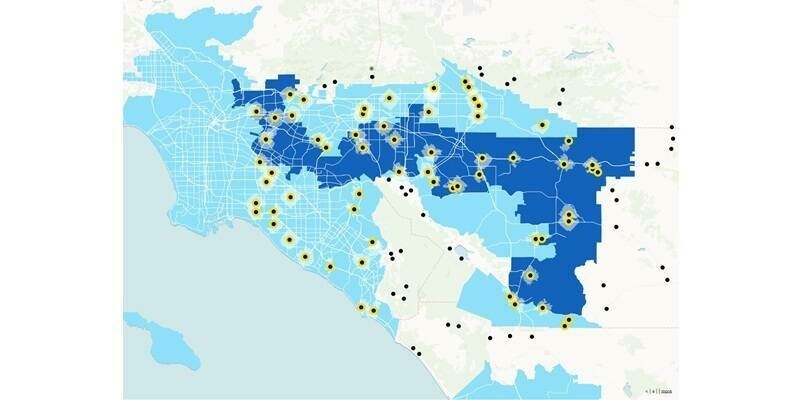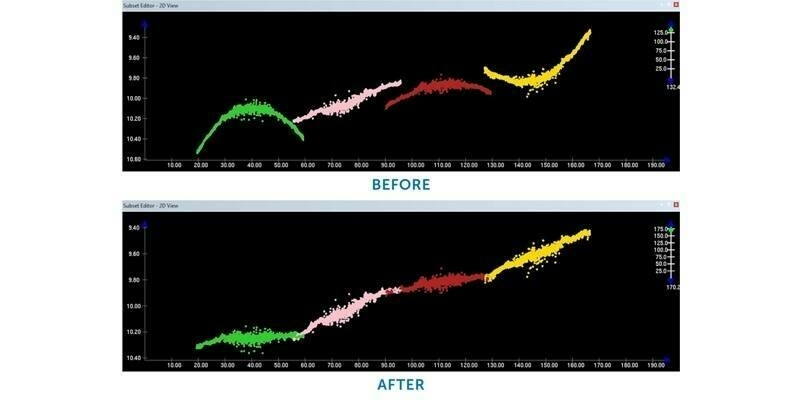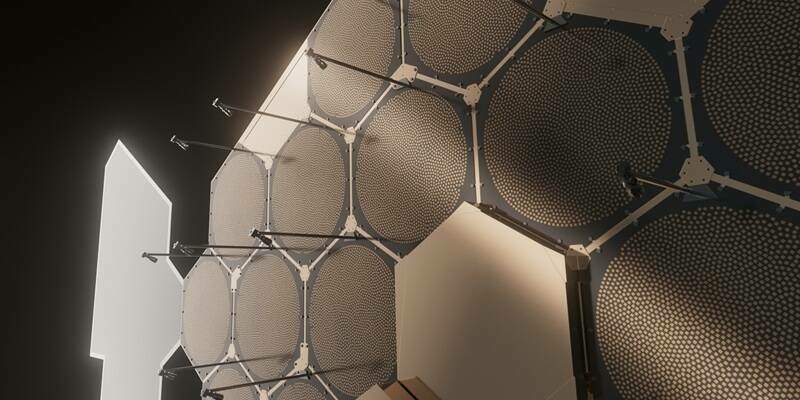Since its founding, SAM has continuously expanded its services to include a broad range of geospatial services including manned and unmanned aerial mapping, airborne, mobile and terrestrial LiDAR, photogrammetry, geographic information systems (GIS), subsurface utility engineering (SUE), utility coordination (UC), hydrographic surveying, and construction phase services.
Headquartered in Austin, Texas, SAM has over 900 employees in 29 offices across the U.S. In 2018 the company was ranked by Engineering News-Record (ENR) magazine as number 106 among the Top 500 Design Firms. In an independent survey of its employees, SAM has been recognized as a Top Work Place for six years in a row, from 2012-2017.
SAM currently employs more than 180 surveying, SUE, and geospatial crews nationwide. Its staffing and technical infrastructure enables it to deploy advanced UAS platforms regionally, providing lower mobilization cost for clients. With over 100 licensed surveyors, engineers, photogrammetrists, and GIS professionals, the company has licensed staff in 42 states.
The use LiDAR scanning technologies became important at SAM early in the life of the company. According to Chris Guy, Geospatial Operations Manager, “SAM completed its first aerial LiDAR topographic mapping project using a subcontractor in 1998. The project consisted of low density LiDAR flown with a fixed-wing aircraft and breakline enhancement completed using stereo photography and photogrammetry. Our first electric transmission project to map overhead structures was completed in 2003, capturing HD LiDAR with LIDAR mounted on a helicopter.”
Investing in Technology
By 2005, SAM had begun making significant investments in 3D laser scanning equipment. Since then, the company has continued to purchase the latest hardware and software to support its impressive growth. In addition to currently having over 300 GNSS instruments, SAM’s recent sensor purchases have included two RIEGL miniVUX-1UAV LiDAR scanners and a RIEGL VQ-1560i aerial LiDAR/digital camera. Along with a wide variety of CAD, GIS, photogrammetric, and feature extraction software, SAM also uses the RIEGL Airborne RiPROCESS Suite to manage and process data captured by RIEGL LiDAR sensors.
The RIEGL products were chosen because of their increased performance and capabilities. Bob Williams, Geospatial Business Manager explained, “Our primary aerial mapping business is heavily weighted toward overhead electric transmission and distribution mapping, which requires a high point density to ensure that small electric features and underbuilds are captured. The new RIEGL tools help us meet those needs.”
To validate these capabilities, SAM conducted a LiDAR rodeo over the same transmission line located in the Midwest with three major vendors. The RIEGL VQ-1560i outperformed the other competing systems based on the pre-established business requirements. SAM subsequently purchased the VQ-1560i in Q1 2018. The company expects the investments to be fully recognized in less than two years, providing a platform to continue the double-digit year-over-year increase in revenue.
Workflow Integration
The VQ-1560i provides a dense, uniform LiDAR scan pattern from a fixed wing platform. Using fixed-wing instead of traditional helicopter acquisition allows SAM to acquire data at almost three times the speed, staying aloft longer by increasing endurance and collecting a wider swath. The VQ-1560i is coupled with a 100 MP digital camera for simultaneous acquisition of LiDAR and imagery.
Matt Thomas, Geospatial Technology Manager noted, “The decision to purchase the VQ-1560i complements our UAS strategy which employs two RIEGL miniVUX sensors. Having manned and unmanned options enables us to maintain the same processing workflows for both types of platforms. Our current UAS platform carries a four-sensor payload. Going forward, our plan is to add two heavy-lift, long endurance UAS platforms annually for the next five years.”
Both manned and unmanned LiDAR workflows were easily integrated into SAM’s existing, proven processing and calibration procedures, due to its extensive experience with scanners from Leica, Teledyne Optech, and RIEGL. The classification and CADD/GIS feature extraction has remained the same, but enhanced by higher density datasets.
Projects
SAM is currently completing one of the largest UAS projects in the U.S. Work began on an 1150-mile electric transmission project in May 2018 with a four-sensor UAS payload. The flight platform is a Pulse Aerospace Vapor 55 with a RIEGL miniVUX for LiDAR, coupled with three other sensors. One of the biggest challenges involved configuring three image sensors with various resolutions, focal lengths, and fields of view with the LiDAR unit, all while keeping the total gross weight of the UAS under the 55-pound FAA regulation.
A single flight pass carrying multiple payloads proved to be the best solution for the client requirements. Ground inspection crews work in concert with the aerial inspectors, setting GPS control and weather stations, and gathering meteorological data during the mission to estimate conductor temperature for sag. Artificial intelligence (AI) and machine learning (ML) algorithms will be used to sort, filter, and analyze over 700,000 images to identify anomalies in the image and LiDAR datasets for maintenance purposes. LiDAR will be used to calculate encroachments and conductor clearances, with all the findings and transmission line attributes loaded into an Esri geodatabase.
SAM also began operating the RIEGL VQ-1560i in early May 2018. One of its early projects was a one-mile, dense urban transportation corridor with very wide multiple lanes, limited roadway access, small/nonexistent shoulders, overpasses, and bridges.
There were several challenges associated with different options for scanning the corridor. A purely airborne approach would have left voids and shadowed areas in the dataset. A mobile LiDAR-only approach would have required a large amount of survey control to be set in inaccessible areas, creating safety concerns for field staff, and producing a final dataset that was weak in the right-of-way outside of the main drive lanes.
To mitigate these issues, SAM elected to approach the project with a hybrid of combined airborne and mobile LiDAR acquisitions. First, a dense control network was established in accessible areas throughout the corridor. Then the VQ-1560i acquired the airborne dataset with multiple passes for LiDAR data and high-resolution nadir imagery. Mobile LiDAR was also acquired for all roadways within the project limits. The airborne LiDAR data was calibrated to control with a final vertical RMSE of 0.036’ at the control, and the mobile LiDAR was then calibrated to both the control network and the airborne dataset.
Chris Guy explained, “The airborne data was a great aid in densification of the control network for the inaccessible areas, to improve the calibration of the mobile LiDAR data. The overall final deliverable included a seamless hybrid point cloud—mobile on hard surfaces, airborne on soft surfaces—and orthomosaics of the entire corridor. The resulting vertical RMSE at the control of the final dataset was 0.019′.”
Looking to the Future
As SAM continues to build on its capabilities for the AEC industry, our expert team recognizes several advancements with LiDAR tools that are likely to occur:
- Further expansion of combined terrestrial, mobile, and aerial solutions on a single project, particularly on transportation projects for engineering design grade surveys.
- LiDAR, close range imagery, mid-range IR, and UV remote sensing technology will provide enhanced inspection and predictive analytics using AI and ML software analysis methods.
- Multi-sensor payloads and configurations on aerial flights and mobile mapping drives will enhance and add significant value to traditional engineering projects. Drive or fly once, collecting large volumes of datasets.
- UAS LiDAR sensors will become smaller, with new instrument vendors entering the space spurred by investments pouring into the driverless vehicle market.
- Commercial Geiger Mode, Single Photon, and Flash LiDAR service providers will dominate the large area state, regional, and U.S. terrain market, offering data for sale and readily available at low cost, similar to the evolution of online image data.
- Many private and public sector users will self-perform work on simple projects using low cost UAS’s. Complex UAS (where the total platform and sensor costs exceed $300,000) will continue to be led by geospatial firms committed to engineering design accuracies, while also raising the bar on traditional infrastructure inspection methods.
- SLAM LiDAR (Simultaneous Localization And Mapping) and 3D scanning for below terrain surface (SUE) will continue to grow, while indoor scanning will grow rapidly.
- One-pass with many sensors and the creation of many diverse datasets will provide added value to clients to perform virtual surveys from the desktop.
- More states will adopt aerial survey as a professionally regulated service requiring a licensed surveyor to perform.
From its beginning, SAM has been an industry leader in the innovative use of technology tools to deliver high value data solutions for a wide range of clients in the AEC industry. As the technology continues to mature and advance, SAM is committed to remaining at the forefront of these developments to deliver the highest value data products for its clients.
Subscribe to our newsletter
Stay updated on the latest technology, innovation product arrivals and exciting offers to your inbox.
Newsletter

